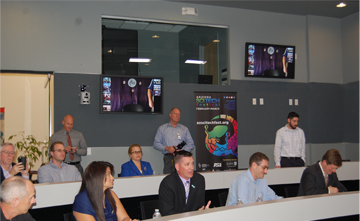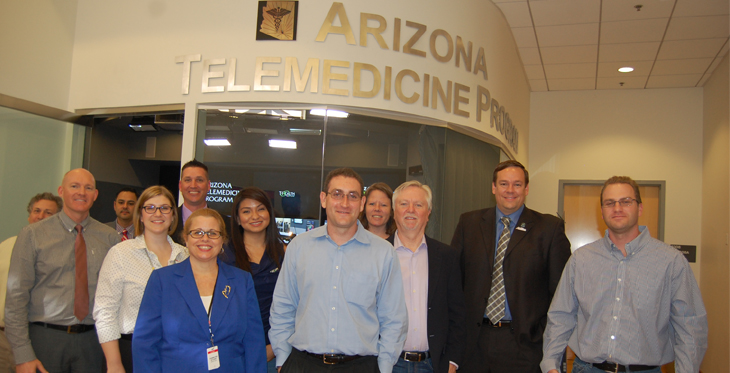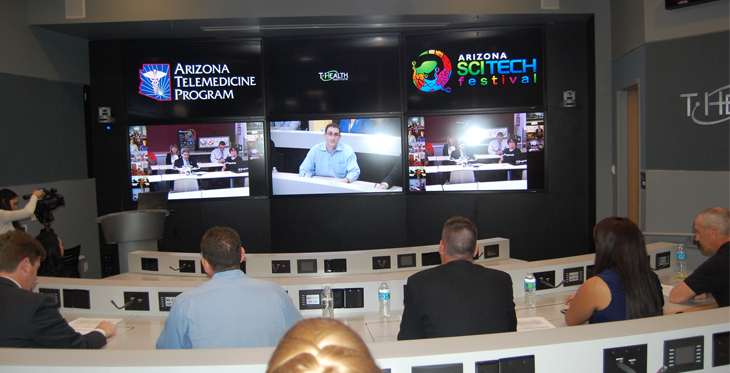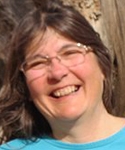The Arizona Telemedicine Program (ATP), a national leader in providing broadband telemedicine services, recently embraced a partnership with Arizona SciTech that has amplified STEM outreach efforts throughout the Grand Canyon State.
In February 2015, ATP collaborated with Arizona SciTech to produce the 2015 Arizona SciTech kickoff event, a virtual press conference. The event, itself a STEM tour de force, connected nine locations across the state, giving communities from Clarkdale to Safford the opportunity to highlight their upcoming STEM events. With the participation of seven mayors, the teleconference made a powerful statement about the importance of STEM in Arizona.
When the teleconference was first proposed, Arizona SciTech Executive Director Jeremy Babendure wondered if it was feasible. But after discussions with ATP’s Janet Major, Chris Martin, and Pete Yonsetto, he realized that ATP’s expertise would position the event for success. As Major, ATP’s Associate Director of Facilities, explained: “This stuff has to work. We would never schedule an event and not have tested with the site because it can't be, ‘Gee, this stuff is great—when it works.’ This is what we do for a living, so it has to work every time.”
ATP’s experience in overcoming the obstacles and barriers to successful teleconferencing were particularly useful when selecting each of the nine press conference sites. Major explained why finding and scheduling space is a critical challenge:
Room scheduling is a big obstacle in the world of videoconferencing. To communicate at a distance requires technology, space, network, and technical support, all of which can be challenges especially in rural locations. But beyond governmental firewalls and trying to share network connectivity and figuring out whether I am going to call you or you are going to call me, or are we going to have to meet someplace else, the connectivity piece is very complicated and it all comes down to what room you are in.
Communities often already possess the necessary resources for teleconferencing but lack the know-how to locate or utilize those resources. Public libraries can play a valuable role in providing access to connectivity, especially in cities like Sahuarita, Nogales, and Yuma.

As Major noted, “Part of that connectivity in the future for many people has to be using their libraries. Where do people go who don't have Internet in their home, or a computer? They go to the libraries. So we have to be able to provide access to resources there.”
An important component of preparing for the press conference was ensuring that each location’s equipment worked and that people were comfortable using it. Martin, Assistant Director of ATP’s T-Health Institute, underscored the value of testing beforehand, saying it is important to make sure that each remote site is comfortable using their own equipment, and that each site has a way to contact ATP so that if there are any technical difficulties, the problems can be resolved behind-the-scenes without interrupting the actual press conference. He added:
I was a little worried just because there were a lot of sites that had equipment but it was either in a closet and they hadn't used it [recently], or this was their first time using it. So, I was a little nervous but it worked out well. I was very happy with the outcome of it.
One of the most exciting results of the press conference is the possibility of future collaborations between ATP and Arizona SciTech. Yonsetto, ATP’s Video Conferencing Administrator, described the fit between the two organizations:
Our organization was perfect for the [Arizona] SciTech event in that we have a nice facility in T-Health for presenters, and we have the equipment to bring in many remote endpoints. Our program is largely focused on education, training, and clinical interaction with remote, hard-to-serve communities. Of course, we also have many urban members as well. The collaboration and technology presented [at the teleconference] was a good example of how you can bring communities together via video.

Major presented her vision of next year’s Arizona SciTech kickoff event, one that would combine ATP’s teleconferencing mastery with Tucson’s Key 2 Employment Symposium, an established event that highlights STEM careers:
The thing that makes us a good partner for Arizona SciTech is that we have great friends in communities where there are existing science communities, but we also have great connections in places where we can help build science communities.
This could potentially be a statewide effort and a really big kickoff, if we can help Jeremy [Babendure] to get the kickoff onto the Governor's calendar so folks can schedule their facilities. What a great way to kick off AZSCITECH Festival 2016 by inviting mayors to their own STEM/STEAM communities! Next year, wouldn't it be great if Jeremy and our engineers built a videoconference to meet and greet with fifteen mayors?
Videoconferencing connectivity can build a virtual community during this event to infuse some great career possibilities—for instance, Careers in Copper—Live from Sahuarita. We could get someone to talk about agriculture careers from Yuma. I would love to see a couple of sites try to do theirs the same day—teach them in advance how to do it, spend time with them in advance, nurture the idea, help make that happen for other folks. If you want to do this in your hometown, this is what you need and these are the resources we can help you find.
Major emphasized that the kind of collaborative effort that Arizona SciTech champions can deliver outstanding results: “I know we can really do great things as a team. That's the power of videoconferencing!”

